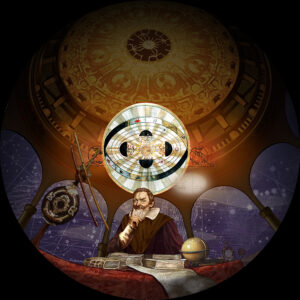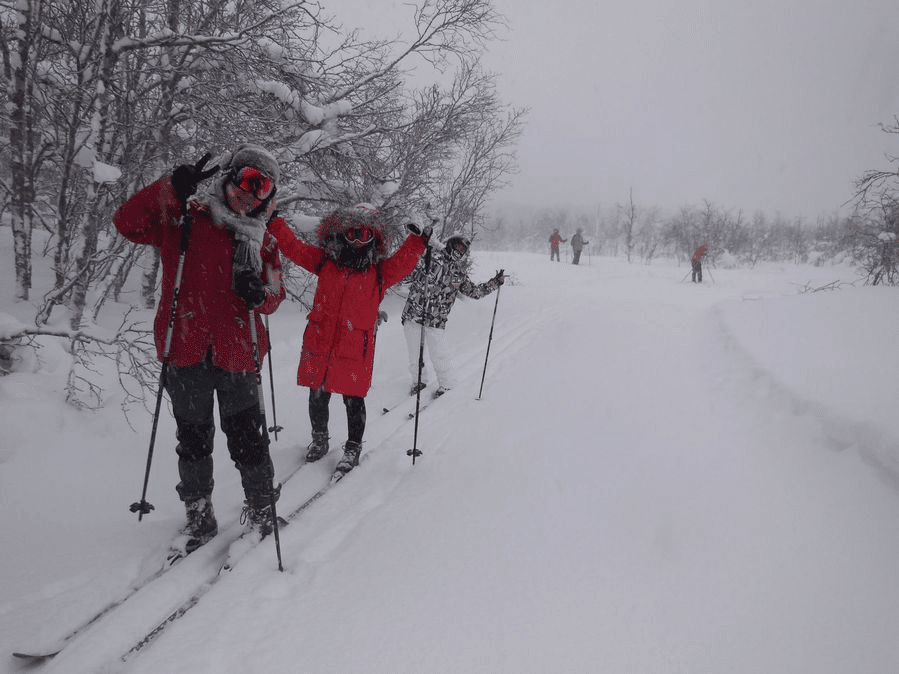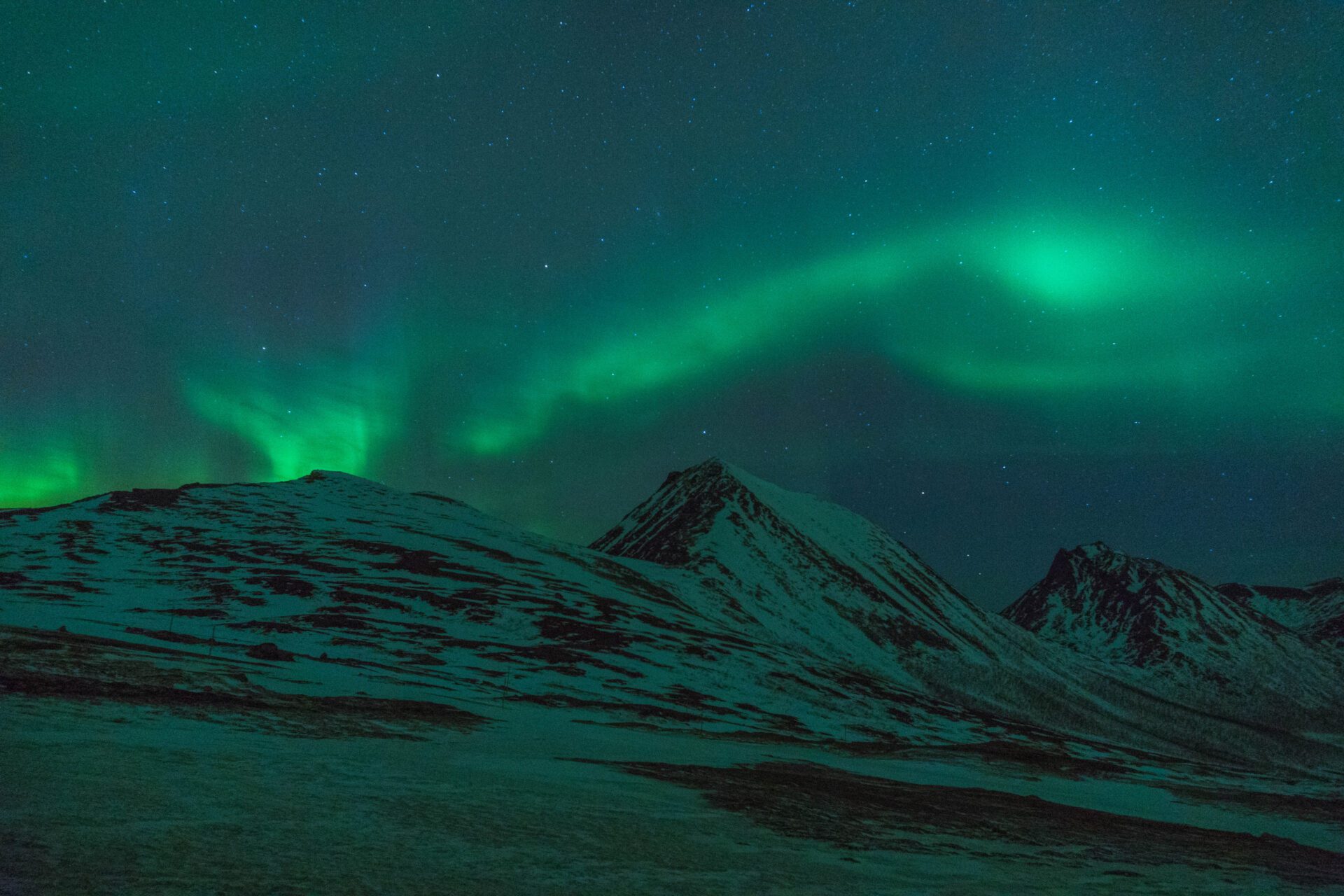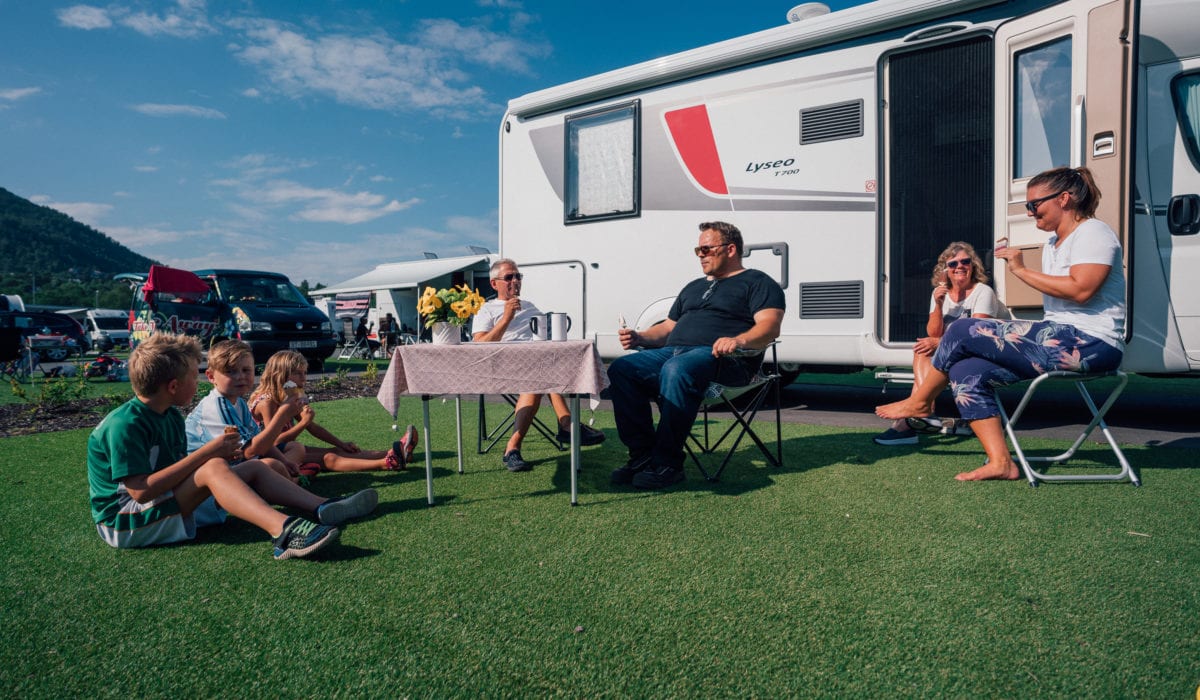Imagine the cold winter night in Northern Norway. The skies are clear, and you gaze upon the millions of stars, realizing how small the earth is compared to the rest of the universe. It’s cold outside, but your winter clothes keep you warm and comfortable. Cozy, as we like to say in Norway.
Just when you have identified the handful of stars you know; a green veil slowly shows itself across the sky. It’s not very strong at first, but the mystery of the light keeps your eyes locked on it. Suddenly, almost in the blink of an eye, the sky explodes. The intense green colour stretches from horizon to horizon, and covers up your entire field of view. It’s dancing and moving, and you feel like it’s just showing off its extraordinary strength and beauty. You want to take a picture, but the immersive experience makes you unable to move. But you’re fine with that, because your body is filled with appreciation of being right there, right then.
This was our Thursday night. We grew up here in the north and the Green Lady has taken our breath away countless times. And she still does.

Northern Lights, Aurora Borealis, Polar Light, Lady Aurora.
We have many names for the things we love, and The Northern Lights are among the most beloved.
It is no surprise that the phenomenon has had a special place in the heart of humans throughout history. You’ll find scriptures by Aristotle, Pliny the Elder and Seneca describing the phenomenon, and even 4 000-year-old Chinese writing documents what seems to be the Aurora Borealis. It was the Italian polymathematician Galileo Galilei who named the lights Aurora Borealis – the dawn of the north.
In the north, the Vikings had a special bond to the Aurora Borealis. They considered the lights to be dancing virgins waiting for them in Valhalla. It’s also possible that the Aurora Borealis is what the Vikings called Bivrost, the bridge between Midgard (earth) and Åsgård (the realm of the gods).


The Sami people, arriving in the north of Scandinavia about 12 000 years ago, also has a close connection to the Northern Lights. They call it guovssahas, meaning the light you can hear. According to Sami tradition, our ancestors live in the northern lights, and it is important to respect that. When the Northern Lights appear, you can not whistle, joike (traditional sami singing), sing or make much noise.
This idea has transferred to the Norwegian settlers, who still tells the children that you shouldn’t annoy the Northern Lights. Especially if you wave a white piece of cloth, the lights will come get you. Of course, we did this all the time as kids. But only for a few seconds before we ran for our lives.
The science behind the Aurora
Scientists started systematically researching the northern lights in the 17th century. Swedish astronomer Anders Celcius made the discovery that there was a connection between the lights and changes in the magnetic field of the earth, and that the solar activity affected the strength of the lights.


However, the first complete northern lights theory was made by Norwegian physicist Kristian Birkeland, in 1886. He showed that the lights are made when electric currents from the sun reaches the magnetic field of the earth, where they are pulled down into the atmosphere and causes the atmospheric gases to light up. This finding is the foundation of research on the Northern Lights, which to this day are far from complete. In Norway we have two research stations launching research rockets into the atmosphere to observe and research the Northern Lights: One in Svalbard, and one in Andøya in Vesterålen, a 20-minute flight from Tromsø.
Chasing the Northern Lights
Where is the best place to see the lights? And when? Can you see them from the camping or from the city? We get these questions every day, and we are more than happy to help you find them!
- As Kristian Birkeland proved, the Northern Lights is caused by electrical particles from the sun reaching our atmosphere. This means that solar activity decides whether the lights will be there or not. Luckily the sun is usually active, and we use Aurora Forecast-apps online to try to foresee the Northern Lights activity. Check out this one from the University of Tromsø, for example.
- We need clear skies. As the Northern Lights appears from 80 kilometres up in the sky, clouds are going to get in the way. Check the local weather forecast, and make sure you find a spot with clear skies.
- It needs to be dark. The Northern Lights are not a strong light source, which means that your surrounding areas should be as dark as possible to get the best views. We don’t really think about it, but the Northern Lights are up there all year around, and it’s not working on the clock. However, as the summer months are filled with light, we cannot see them. This means that you should avoid lights pollution from the city when you go chasing. Luckily, our camping is located right outside the city. It makes a perfect spot for relaxing in your cabin and watching the Northern Lights from your doorstep.


If you want a guided experience, where you’ll be driven to the best places to spot the northern lights, served a warm cup of coffee or tea, and told all stories about the lights – we’ll help you book it right here in the reception. We’re also happy to help you check the aurora borealis- and the weather forecast.





